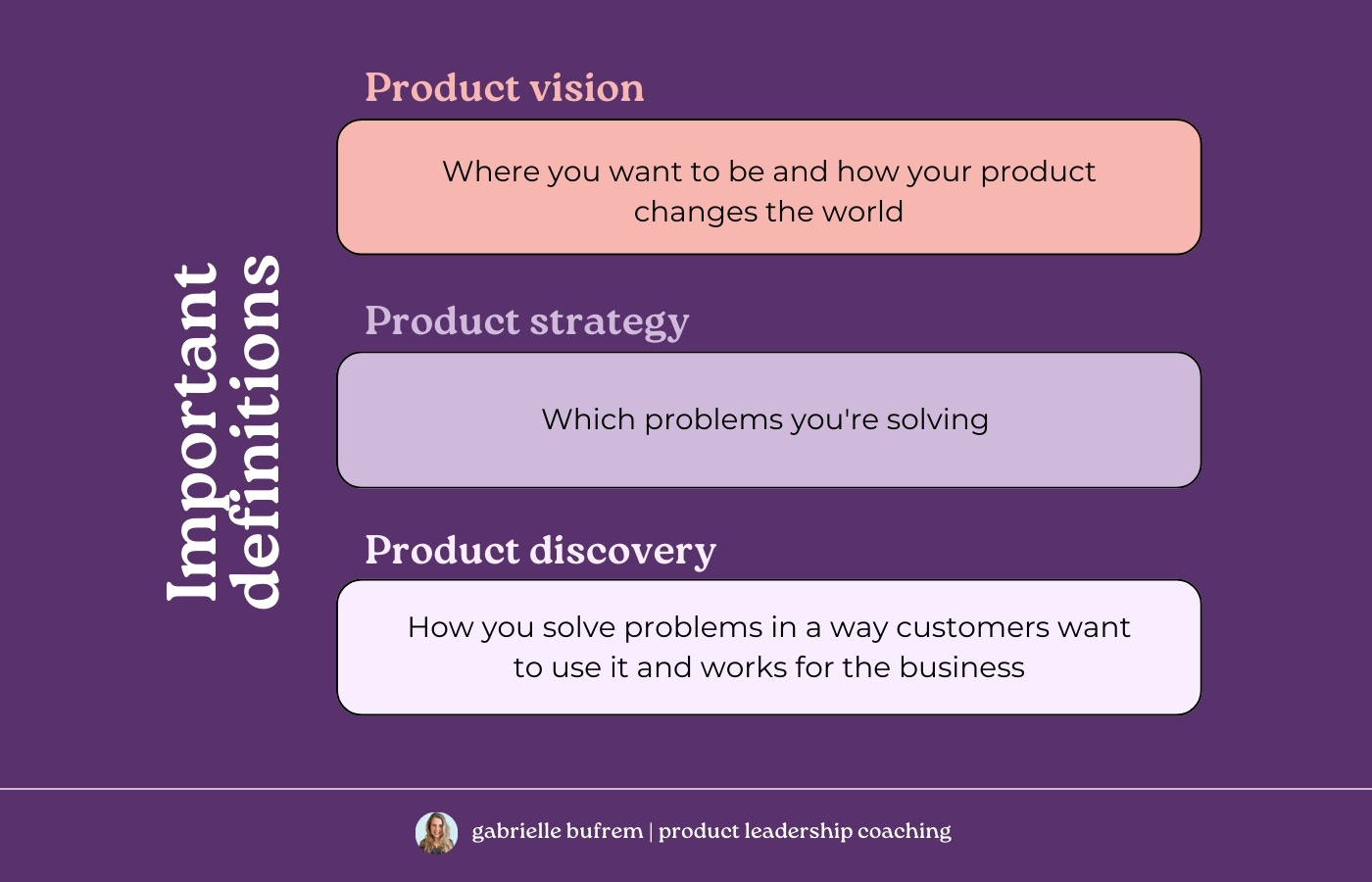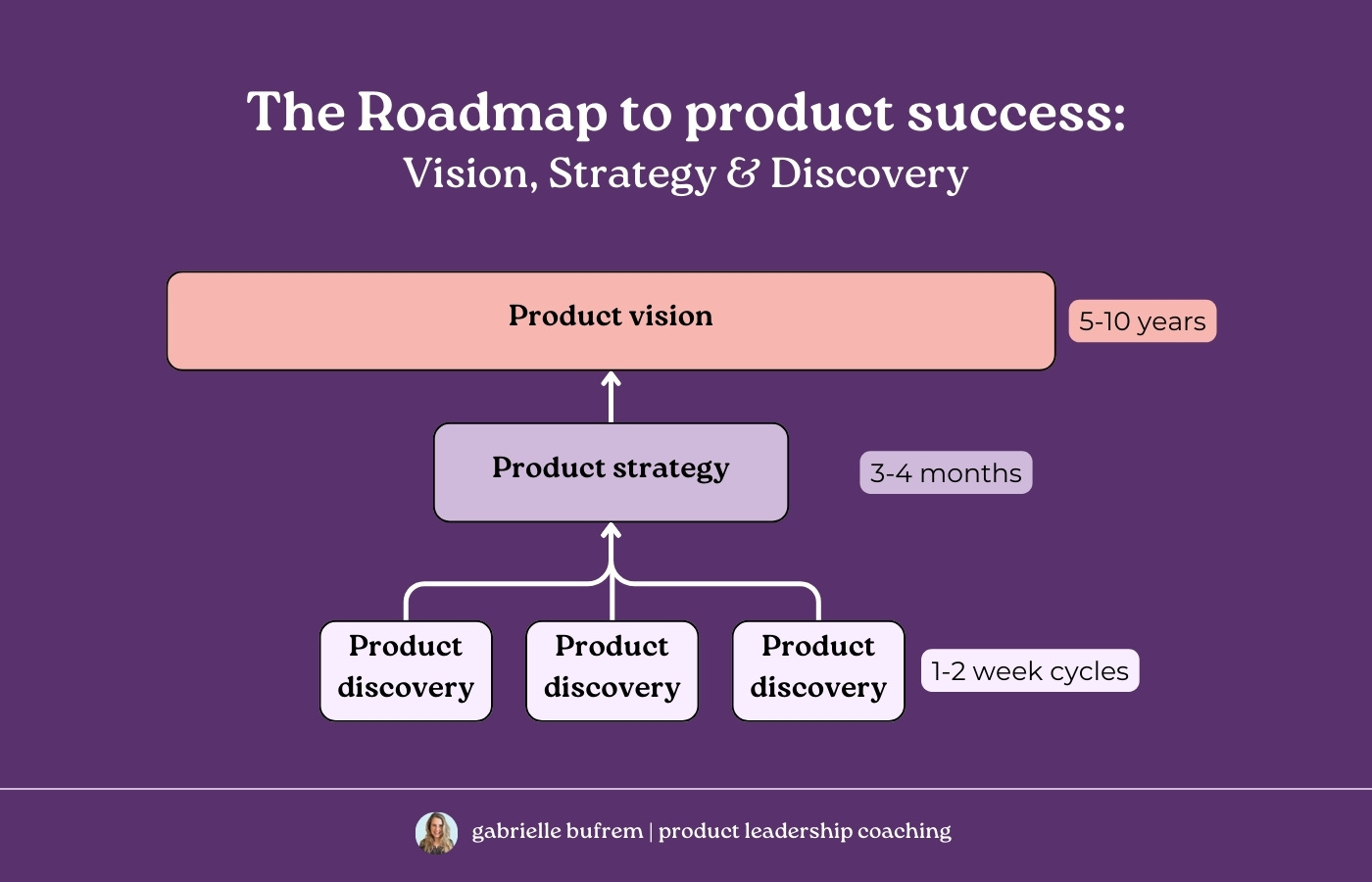The 3 most important practices and artifacts in product and how they intersect
The 3 most important elements of building great products are product vision, product strategy, and product discovery. Despite being the highest-leverage practices and artifacts in product, there’s still a lot of confusion about what they are and how they intersect. That confusion ends now.
Foundations first
Product Strategy
Product strategy is an artifact in the form of a narrative that tells teams the most important problem to solve. It explains why that problem matters and provides the strategic context needed for execution.
It is the best artifact for focusing a team on what matters most right now. Anything outside the product strategy is not a priority. I recommend pairing product strategy with OKRs since OKRs assign core objectives to teams while strategy provides the reasoning behind the chosen focus area.
Who is responsible for this?
The product leader is responsible for developing the product strategy and it should be updated quarterly.
Product Vision
The product vision paints a picture of the future we’re trying to create. It describes how we will change the world of our customers over the next 5-10 years. It is ambitious, bold and story-driven, with our customers at the center of everything.
Who is responsible for this?
The product leader, in collaboration with the CEO and leadership team, is responsible for defining the product vision. It is a long-lasting artifact meant to endure for years.
Product Discovery
Product discovery is the set of practices that help us determine how to solve the problem we’re focused on in a way that customers love and that also works for the business. The order here is important—it must first work for the customer. If customers don’t choose to use it, it won’t help the business. Many mistakenly see product discovery as a phase in the process. It is not. It is a continuous practice.
Who is responsible for this?
Product discovery is the core responsibility of the product team, including the product manager, designer, and engineers. On the engineering side, a tech lead typically oversees this.
How they intersect
In an empowered product organization—where the product team is responsible for solving customer problems and driving business results—these artifacts and practices are indispensable. Yet, there is often confusion about how to leverage them and how they build on each other.
Order of magnitude:
The product vision is the anchor for where the product is headed. The product leader should use the vision to shape the product strategy. The product strategy defines what the team is working on now to drive the vision forward. Product discovery is the practice that helps determine what must be done to solve customer problems in a way that also benefits the business.
In a nutshell:
Vision sets the destination.
Strategy determines what must happen next to move toward that destination.
Discovery is the process for figuring out how to execute that next step.
Time horizon:
These 3 concepts operate on vastly different time horizons.
Long-term: Product vision is a lasting artifact, crafted by the product leader with the executive team. It provides a high-level picture of how the product will change the world over the years.
Mid-term: Product strategy focuses on a quarter’s work. Many organizations try to create year-long product strategies, but those are less effective. The strategy should focus on the most critical problem to solve right now, with the product leader continuously refining it as the team progresses.
Short-term: Product discovery is about rapidly identifying what needs to be done to achieve the desired business outcome and ensuring the solution is one customers will choose. The best teams operate in extremely short cycles, often testing multiple ideas in a single day.
Changing practices, even when adopting best practices, is always challenging. If the concepts described above resonate with you and you’d like to enhance your product practices, I recommend starting with product discovery.
Whenever I begin working with a new client, this is our starting point. We begin here because discovery enables us to quickly deliver results—since it ultimately determines what we build for customers. These early wins help secure buy-in for deeper strategic conversations around product strategy and vision while also providing the customer insights needed to shape the vision itself. Another key recommendation I give my clients is to stay focused. Start small, demonstrate results, learn, and then expand.






